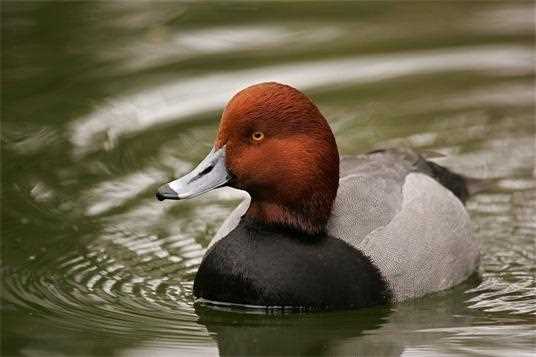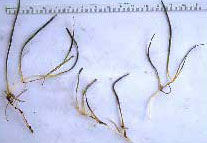GIS models to benefit Texas Laguna Madre redheads

Barry C. Wilson, Ducks Unlimited Inc./Gulf Coast Joint Venture, Lafayette, Louisiana; Bart M. Ballard, Texas A&M Univ.-Kingsville, Kingsville, Texas; Dawn M. Browne, Ducks Unlimited Inc./Gulf Coast Joint Venture, Ridgeland, Mississippi; J. Dale James, Texas A&M Univ.-Kingsville, Kingsville, Texas; Mark J. Petrie, Ducks Unlimited Inc., Vancouver, Washington

Shoalgrass (Halodule wrightii)
The hypersaline lagoon system of the Laguna Madre is the winter home to over 75% of the continental redhead (Aythya americana) population. Redheads in the Gulf Coast region forage almost exclusively on the rhizomes of one species of seagrass, shoalgrass (Halodule wrightii). Freshwater wetlands adjacent to shoalgrass foraging sites are important sources of dietary freshwater for redheads. Consequently, conservation of freshwater wetlands adjacent to seagrass meadows of the Texas Laguna Madre is a priority for partners of the North American Waterfowl Management Plan's Gulf Coast Joint Venture. We conducted weekly aerial surveys of redheads October through March of 2000-'01 through 2002-'03 to determine recent use of freshwater wetlands in the region, and we monitored seasonal water level changes within shoalgrass meadows of the Laguna Madre. We incorporated this data with remote sensing products, other spatial data, and a conceptual biological model of regional redhead habitat use into GIS models that depict conservation priorities for protection, enhancement, and creation of freshwater wetlands for the benefit of redheads in the region.
Ducks Unlimited uses cookies to enhance your browsing experience, optimize site functionality, analyze traffic, and deliver personalized advertising through third parties. By continuing to use this site, you agree to our use of cookies. View Privacy Policy